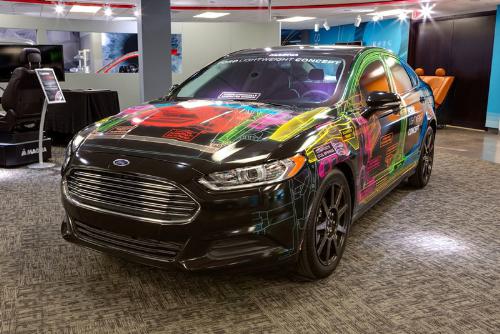Troy-based Magna International and Ford Motor Co. have unveiled a multi-material lightweight concept vehicle that weighs nearly 25 percent less than that of a 2013 Ford Fusion — without compromising performance or safety.
“Our goal was to investigate how to design and build a mixed-materials, lightweight vehicle that could potentially be produced in high volume, while providing the same level of safety, durability, and toughness as our vehicles on the road today,” says Matt Zaluzec, Ford’s technical leader of global materials and manufacturing research. “There isn’t a one-size-fits-all approach to light-weighting. The research vehicle gives us the platform to continue to explore the right mix of materials and applications for future vehicles.”
The Magna-led R&D effort facilitated an extensive use of advanced lightweight and high-strength materials, ultimately resulting in a Fusion concept car that weighs as much as the smaller 2013 Ford Fiesta. Zuluzec says the weight reduction brings the Fusion, a C/D segment family sedan, to that of a subcompact B-car without conceding the vehicle’s performance or safety of the occupants.
The concept vehicle is part of the U.S. Department of Energy’s Vehicle Technologies Office lightweight materials project portfolio, addressing future Corporate Average Fuel Economy (CAFE) economy legislation, says Swamy Kotagiri, Magna’s CTO.
“Government mandated fuel economy and crash standards are big topics in the automotive industry, and as a supplier we play a significant role partnering with our customers to achieve fuel efficiency goals through lightweight vehicle structures that meet such safety standards,” Kotagiri says. “Through early collaborative involvement, like with (this) project, we are better positioned to assist our customers in optimizing their products and meeting the challenges of future mobility.”
While Vehma International, part of Magna’s Cosma International operating unit, manufactured and integrated the multi-material body-in-white, closures, chassis, and bumper components, Ford supplied the vehicles and weight-optimized powertrain, tires/wheels, suspension, interiors, glass, and seating.






